This large and very seriously intended publication from one of America’s major academic presses explored the supposed connection between crime and physiognomy. Of course, the notion that criminals might have different facial features or shape of head was far from a new one, even back in the 1930s: folklore has long had it that someone whose eyes are “too close together” is not to be trusted, for example. While Earnest Albert Hooton was too sophisticated to believe anything quite so naive, his dogmatic belief that there must be some relationship between face and felony, coupled with an overestimation of his own knowledge of statistics, led him into some laughable absurdities.
In the pursuit of this will-o’-the-wisp, he had gathered vast amounts of data, measuring and assessing thousands of heads, mostly those of convicted criminals. The results were encoded on to punched cards and analysed using a mechanical sorter. If there were a straightforward connection between cranium and criminality, doubtless Hooton would have found it and his name would not now be forgotten. But he didn’t.
What he did find is a lot of statistical noise that he convinced himself must mean something, though exactly what is unclear. For example, we learn that “Old American” criminals (meaning those of European extraction who are not recent migrants) who come from Kentucky are more likely to have thick head and body hair, whereas those from North Carolina are more sparsely covered.
Of course what he was so scrupulously reporting were the minor anomolies in his data, not important differences between the malefactors of one state and another. If one set of criminals are hairy and another lot are bald, then the obvious conclusion is that shagginess and shadiness are unrelated, but Hooton was seemingly unable to see the obvious.
National origin and so-called race were also considered by Hooton to be factors worthy of analysis. A short, very typical quotation will give the idea of the brain-numbing worthlessness of the book; there is page after page of this stuff:
The Irish-American criminals also contrast markedly with their civilian check sample. They are five years younger than the civilians, have smaller chest diameters, shorter upper faces, noses and ears. As in the case of the British, the Irish criminals exceed the civilians of the same antecedents in head height, forehead breadth, nose breadth and jaw breadth. Consequently, they also differ from the civilians in the indices derived from this last named group of breadth measurements. The criminals have higher length-height and breadth-height indices of the head, noses broader relative to their height, and foreheads broader relative to face and head breadth. The upper facial proportions of the criminals are shorter and broader. The criminal ears also relatively shorter and broader.
To make this indigestible fare more attractive, Hooton took the surely inadvisable decision to have his text illustrated in a jaw-droppingly tasteless style. These drawings by one Elmer Rising, some of which I reproduce below, certainly enliven Hooton’s endless dry-as-dust tabulations, though they hardly make his thesis seem any saner.
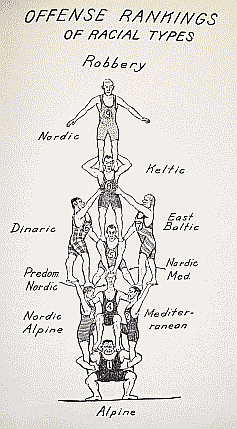 |
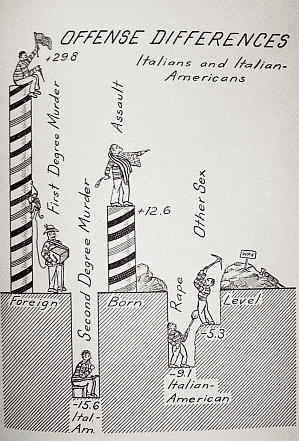 |
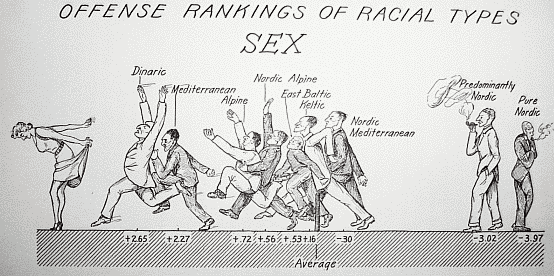 |
|
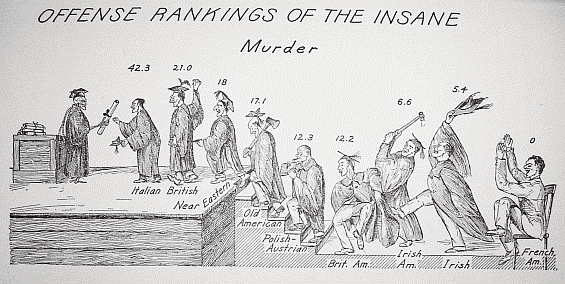 |
|
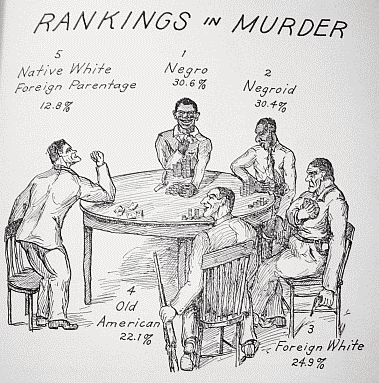 |
|
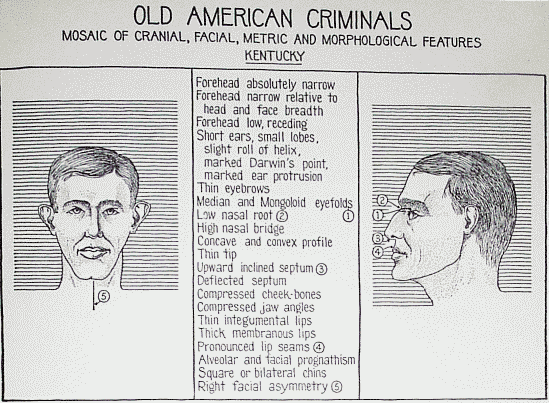
Leave a comment